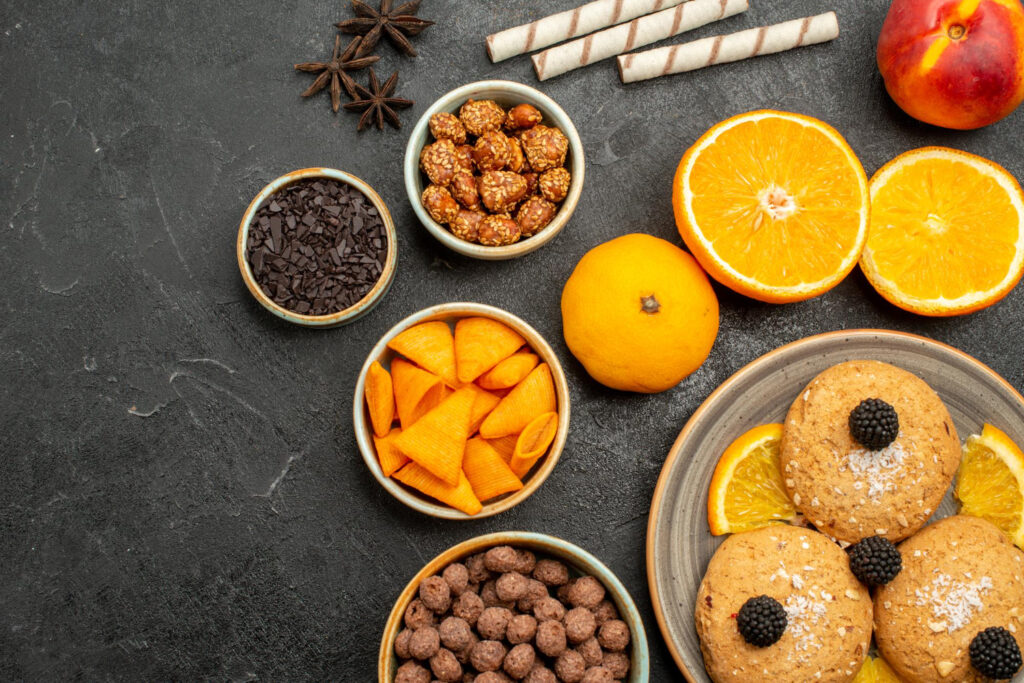
In this article
Fruits are an essential part of a healthy diet, offering a range of vitamins, minerals, and fiber. However, it’s crucial to be aware of their natural sugar content, as some fruits contain more sugar than others. Here’s a detailed look at fruits with the highest sugar content and those with the least.
Mangoes
Mangoes are often celebrated for their juicy, tropical flavor and nutritional benefits, but they also come with a high sugar content. A single mango can contain up to 46 grams of sugar. This makes it a less-than-ideal choice if you’re watching your sugar intake or trying to manage your weight. To enjoy mangoes without overindulging in sugar, limit yourself to a few slices and save the rest for later.
Grapes
Grapes are another fruit that’s high in natural sugars. One cup of grapes has about 23 grams of sugar. These bite-sized fruits are easy to snack on, which can lead to consuming more sugar than intended. To enjoy grapes more mindfully, consider slicing them in half and freezing them for a refreshing treat that takes longer to eat.
Cherries
Cherries are not only sweet but also high in sugar. A cup of cherries contains 18 grams of sugar. It’s easy to lose track of how many you’ve eaten if you’re snacking straight from a large bowl. To manage your intake, pre-measure your servings so you’re aware of exactly how much sugar you’re consuming.
Pears
A medium pear holds about 17 grams of sugar. For those aiming to cut back on sugar, eating an entire pear might not be the best choice. Instead, try adding a few slices to a salad or mixing them into low-fat yogurt for a balanced snack.
Watermelon
Watermelon is a favorite summer treat, known for its high water content and refreshing taste. However, a medium wedge contains around 17 grams of sugar. While it’s great for hydration and replenishing electrolytes after time in the sun, it’s best enjoyed in moderation, with just a slice or two.
Figs
Figs are naturally sweet fruits that pack quite a bit of sugar. Two medium-sized figs have about 16 grams of sugar. To keep your sugar intake in check, consider slicing figs and pairing them with goat cheese for a protein-rich snack or incorporating them into a savory sauce for meats like skinless chicken.
Bananas
A medium banana contains approximately 14 grams of sugar. If you find this amount too high, you can manage your sugar intake by using half a banana in your morning cereal or smashing a small piece in a peanut butter sandwich.
Fruits With Less Sugar
Avocados
Not all fruits are high in sugar. A whole avocado, which is technically a fruit, has only 1.33 grams of sugar. Avocados can be a versatile addition to your diet, whether spread on toast, added to salads, or made into guacamole. However, keep in mind that they are high in calories, so moderation is key.
Guavas
Guavas are low in sugar, with each fruit containing about 5 grams of sugar. They also provide 3 grams of fiber, which is more than you’d get from brown rice or whole-grain bread. For an extra fiber boost, try adding guavas with the skin on to your smoothies.
Raspberries
Raspberries are an excellent low-sugar fruit option, with only 5 grams of sugar per cup. They also offer a substantial amount of fiber, with 8 grams per cup, aiding digestion and helping you feel full with fewer calories. Enjoy them one at a time or pair them with fresh whipped cream for a delightful treat.
Strawberries
Strawberries are another delicious low-sugar fruit, with about 7 grams of sugar per cup. They are packed with vitamin C and antioxidants, making them a nutritious and sweet addition to your diet without too much sugar. Add them to your morning yogurt or blend them into a smoothie for a refreshing treat.
Blackberries
Blackberries are rich in vitamins and antioxidants and have relatively low sugar content, with only 7 grams per cup. They also provide a good amount of fiber, which can help keep you full and aid in digestion. Blackberries are great on their own, mixed into cereal, or as a topping for desserts.
The Takeaway
Fruits are a nutritious and essential part of any diet, providing vital vitamins, minerals, and fiber. However, it’s important to be mindful of their natural sugar content. By choosing fruits with lower sugar content and managing portions of those that are higher in sugar, you can enjoy their health benefits while keeping your sugar intake in check. Whether you prefer the sweetness of mangoes or the subtle flavor of raspberries, there are plenty of options to suit your taste and dietary needs
A Quick Review
Fruits are essential for a healthy diet, but some have higher sugar content than others. Mangoes and grapes top the list with high sugar levels, while avocados and raspberries are low-sugar options. By being mindful of your fruit choices, you can manage your sugar intake while still enjoying the nutritional benefits
FAQS
Which fruits have the highest sugar content?
Mangoes, grapes, cherries, pears, watermelon, figs, and bananas are among the fruits with the highest sugar content.
What are some low-sugar fruit options?
Avocados, guavas, raspberries, strawberries, and blackberries are fruits with lower sugar content.
How can I enjoy high-sugar fruits without consuming too much sugar?
Limit portion sizes, slice and freeze fruits like grapes, and mix fruits with other foods like yogurt or salads.
Can fruits with low sugar content still be nutritious?
Absolutely. Low-sugar fruits like avocados and berries are rich in vitamins, fiber, and antioxidants.











